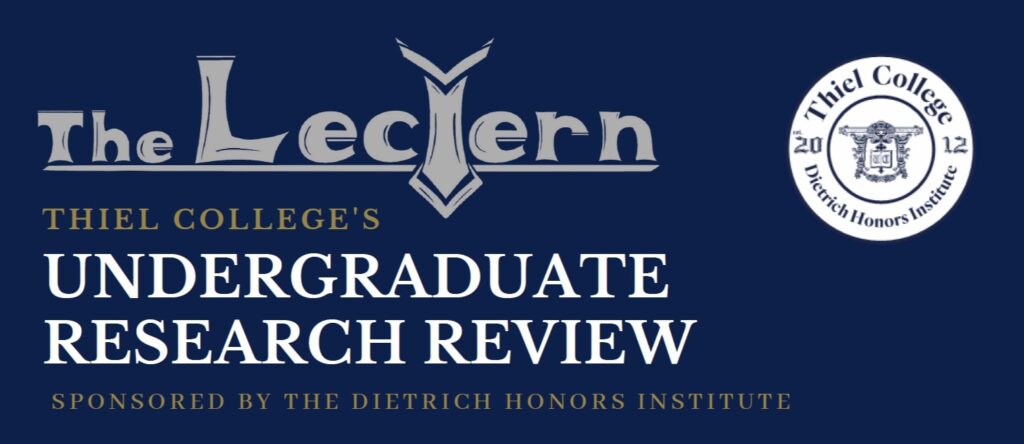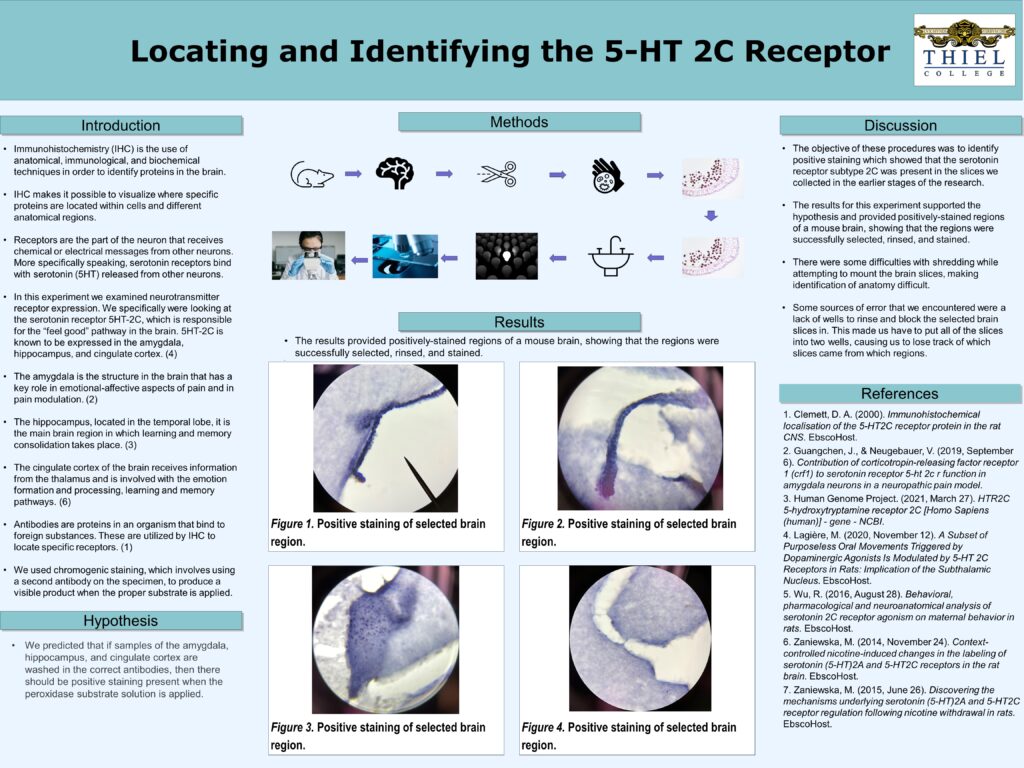Issue 1 (Fall 2021)

Editors
Hollie Barna, Katrina Deckinger, Britney Georgia, Emily Irons, Sydnee Pilarski, Jade Rhoads, Molly Shepler, and Morgan Wood
Faculty Advisor
Dr. Sheila Gross
Issue 1 Journal Articles
Mathematics within Literature
By Devyn Bossard
Left and Right: Positive and Negative
By Britney Georgia
Coverage or Content: An Examination of Media’s Dramatization of Serial Killers
By Emily Irons
Is There Internalized Oppression Among Black Sexual Minority Women?
By Alexeis Palonis
The Romantic Aspects of Modernism and Imagism
By Sydnee Pilarski
Tuck Everlasting: Not All Novels are Created Equal
By Sydnee Pilarski
Dialects and Linguistic Replacement: How Language Impacts Cultural and Social Perceptions
By Molly Shepler
Studying Christian Hymns as Works of Literature: Recognizing Themes of Spiritual Illumination
By Molly Shepler
Psychology of Colors: How People Relate Emotion to Colors
By Allison Walsh
Locating and Identifying the 5-HT 2C Receptor
By Morgan Wood, Falan Vancura, and Zachary Smith
Abstract
Using immunohistochemistry techniques in the correct brain regions, there should be positive staining of the 5-HT receptor subtype 2C. Immunohistochemistry, also known as IHC, combines anatomical, immunological and biochemical techniques to view proteins in tissues by using antibodies to bind specifically to their targets in the brain. The selected neurotransmitter antibody for this experiment was the Serotonin Receptor Subtype 2C and the selected brain regions to observe it in were the Amygdala, Hypothalamus and the Cingulate Cortex regions of the brain. The selected areas of the brain were thinly sliced with the help of the cryostat, washed, stained with two different antibody stains, and were observed for a reaction using the chromogenic technique to visualize where the protein was present. The slices were then mounted so that the results could be easily observed. The objective of these procedures was to identify positive staining which proved that the Serotonin Receptor Subtype 2C was present in the slices we collected in the earlier stages of the research. The results for this experiment supported the aforementioned hypothesis and provided positively-stained regions of a mouse brain, showing that the regions were successfully selected, rinsed, and stained.
Morgan Wood ‘23 is a Neuroscience major from Fredericksburg, VA.
Falan Vancura ‘22 is a Communications Sciences and Disorders major from Greenville, PA.
Zachary Smith ‘23 is a Psychology (Counseling Track) major from Pittsburgh, PA.

